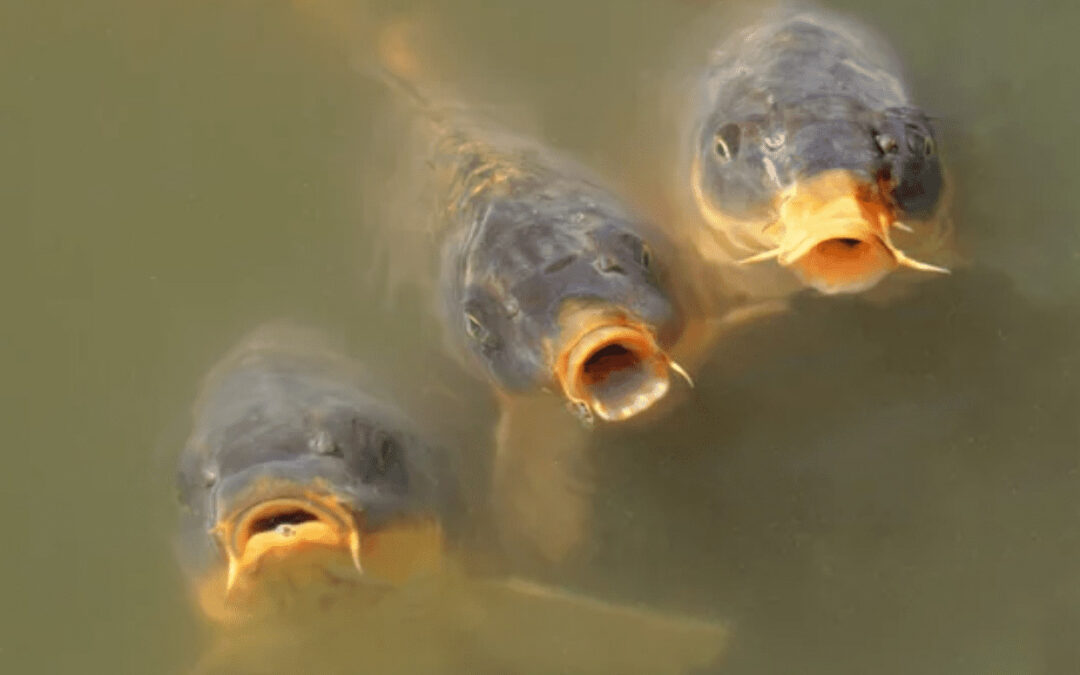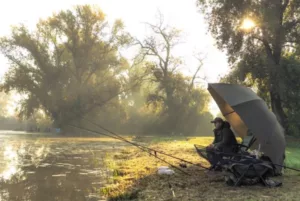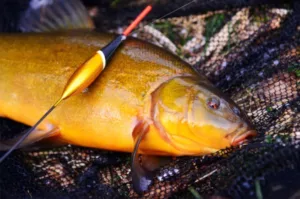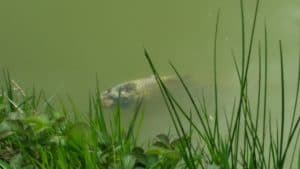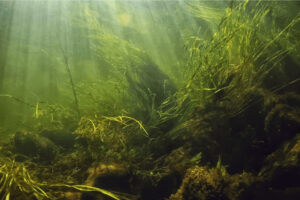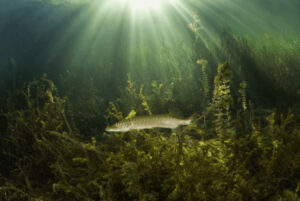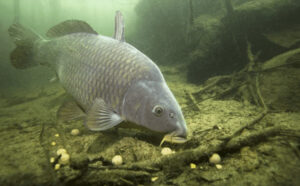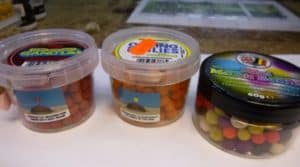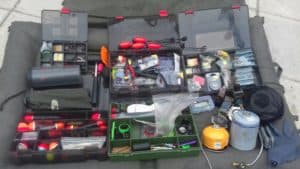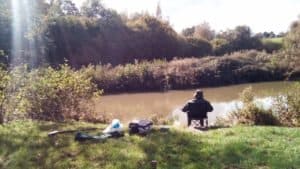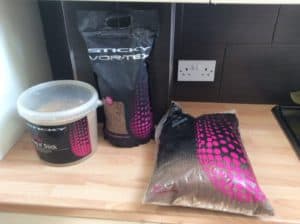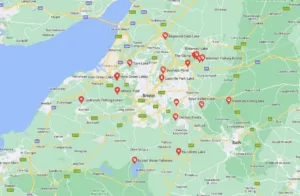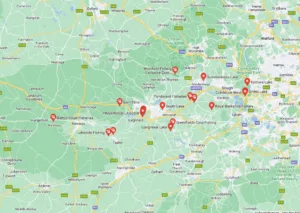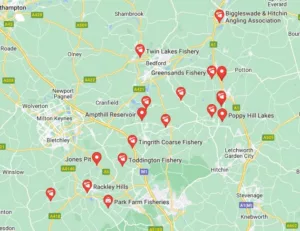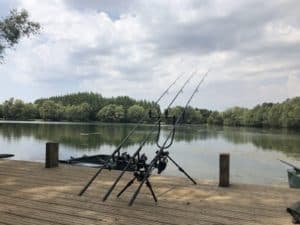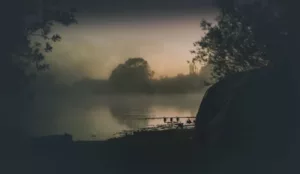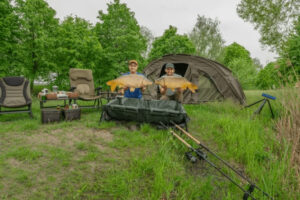The United States’ opinion of carp compared to the United Kingdom is slightly different. In this article, we discuss conservation and responsible carp fishing.
In the United States, carp are considered an invasive species and can have negative impacts on native fish populations.
However, in the UK carp are often seen as a valuable resource for sport fishing and recreational activities.
The UK also has stricter regulations around how to catch carp responsibly.
Despite this difference in opinion, both the US and UK agree that carp must be managed responsibly to ensure that native fish populations are not harmed.
No matter which country you are in, responsible fishing practices should always be followed when catching carp.
This includes using barbless hooks and practicing catch-and-release fishing whenever possible.
Anglers should also stay informed of local regulations to ensure that they are staying within the law.
By following these guidelines, we can maintain healthy waters and protect our native fish species while still enjoying carp fishing. With the right approach, we can have our cake and eat it too!
Countries other than the UK
Carp are an invasive species in many parts of the world, and their negative impact on local ecosystems is well documented.
As a result, there is a growing movement to promote responsible carp fishing practices that will help to conserve local ecosystems.
In this blog post, we will discuss some of the best ways to practice responsible carp fishing.
Carp Biology
Carp are an important part of the aquatic ecosystem and play a vital role in the food chain.
However, overfishing and pollution have resulted in a decline in their populations in many parts of the world.
Conservation and responsible fishing practices are essential to ensure the sustainable management of carp populations.
Carp fishing should be regulated to ensure that only a certain number of fish are caught each year, and that they are returned to the water safely.
In addition, measures should be taken to reduce pollution and habitat destruction, which are major threats to carp populations.
By working together to conserve and protect carp populations, we can ensure that these important fish continue to play a vital role in the aquatic ecosystem for generations to come.
Carp Habitat
Carp are freshwater fish that are found in ponds, lakes, and rivers.
Carp are a popular target for anglers, but their population is declining.
Carp are an important part of the ecosystem, and their decline could have a negative impact on the environment.
Anglers can help carp populations by practicing catch and release, or by using responsible carp fishing practices.
Carp Feeding Habits
Carp are a popular game fish, and their populations are managed through stocking and harvest regulations.
Carp are opportunistic feeders and will consume a variety of plant and animal matter.
Their diet consists mostly of aquatic plants, algae, and invertebrates.
Carp are filter-feeders and play an important role in the aquatic ecosystem by helping to control algae blooms.
Carp are an important part of the aquatic ecosystem and their populations are managed through stocking and harvest regulations.
Carp are opportunistic feeders and will consume a variety of plant and animal matter. Their diet consists mostly of aquatic plants, algae, and invertebrates.
Carp are filter-feeders and play an important role in the aquatic ecosystem by helping to control algae blooms.
Carp and the Ecosystem
Carp are an important species in many ecosystems, providing vital ecosystem services such as nutrient cycling and water purification.
However, carp are also one of the most commonly caught and consumed fish in the world, meaning that they are under immense pressure from fisheries.
In order to ensure the long-term sustainability of carp populations, it is important to practice conservation and responsible fishing practices.
One way to conserve carp is through catch-and-release fishing, which allows them to continue performing their important ecosystem functions.
Additionally, responsible fishing practices such as using the proper gear and size limits can help reduce the impact on carp populations.
By working together to practice conservation and responsible fishing, we can help ensure that carp populations remain healthy and productive for generations
The Problem with Carp
Carp are a problem for conservation because they are an invasive species.
They were introduced to North America in the 1800s and have since spread throughout the continent.
Carp are now found in every state and province, and they are a major problem for native fish populations.
Carp are a problem for conservation because they are an invasive species.
They were introduced to North America in the 1800s and have since spread throughout the continent.
Carp are now found in every state and province, and they are a major problem for native fish populations.
Carp are bottom-feeders that stir up sediment, which can smother native plants and animals.
They also compete with native fish for food and habitat.
As a result of these activities, native fish populations have declined in many areas.
Carp as a Valuable Resource
Carp are an extremely valuable resource when it comes to conservation and responsible fishing practices.
Carp are very good at filtering water and removing pollutants, making them an important part of keeping our waterways clean.
They are also very popular fish to catch and can be caught using a variety of methods.
When fishing for carp, it is important to be respectful of the fish and their habitat.
Be sure to practice catch and release if you are not planning on eating the fish, and use barbless hooks to avoid harming the fish.
Carp are an important part of our ecosystem and should be protected and respected.
Responsible Carp Fishing Practices
If you are considering going carp fishing, there are a few things you should know about responsible carp fishing practices.
First and foremost, remember to practice catch and release. This is especially important if you are not planning on eating the fish. Barbed hooks can hurt the carp, even if you immediately remove the hook. Use barbless hooks instead.
Carp tend to swim near the bottom of lakes and rivers, so use heavy enough bait to help the fish fight against the line.
Always check your state fishing regulations to ensure that you are keeping the right species of fish and that you are following the appropriate size and number of fish you may keep or harvest.
Carp Angling Methods
Carp angling methods have come under scrutiny in recent years with regards to conservation and responsible fishing practices.
Carp are a non-native species in many parts of the world, and their numbers have exploded in some water bodies, leading to negative impacts on native fish populations.
In addition, carp are notoriously difficult to manage and control once they become established in an ecosystem.
As a result, many fisheries biologists and managers are advocating for a more proactive approach to carp management, including removal and/or restriction of carp fishing.
There are a number of different methods that can be used to fish for carp, and each has its own advantages and disadvantages.
The most common method is still fishing with bait, which can be effective but is often not very selective.
Fly fishing, on the other hand, is a more targeted approach that can be used to catch carp without harming native fish populations.
Conclusion
Carp are an important species for many reasons, and when caught responsibly they can provide a great source of sport fishing and enjoyment.
However, it is important to keep in mind that they are an invasive species, and can have negative impacts on native fish populations and ecosystems.
Anglers should be sure to practice catch-and-release fishing when possible, use barbless hooks, and stay informed of local regulations in order to ensure that carp are being managed responsibly.
With the right approach, carp angling can be a great way to enjoy the outdoors and help protect our native species.
FAQ
What is the best way to practice responsible carp fishing?
The best way to practice responsible carp fishing is to use barbless hooks, fish for carp using catch and release methods if possible, stay informed of local regulations and select bait that will not attract native species.
How can I tell if a carp is the right size and species?
Check your local fishing regulations for specifics on the acceptable size and species of carp to be kept or harvested. Additionally, an experienced angler may be able to identify a carp’s species by its physical characteristics.
What are some common methods used for carp fishing?
The most common method of carp fishing is still fishing with bait, although fly fishing can also be used. Other methods include trolling, drift fishing and spin casting.
How do I protect native fish populations when carp fishing?
Be sure to use barbless hooks to avoid harming any fish you may catch, and practice catch and release whenever possible. Additionally, be sure to select bait that will not attract native species.
Are carp an invasive species?
Yes, in many parts of the world carp are considered to be an invasive species and can have negative impacts on native fish populations and ecosystems. It is important for anglers to practice responsible carp fishing and follow local regulations to help protect native species.
Related Posts
I have made a lot of mistakes during my fishing sessions and don’t want you to make the same mistakes. I’ve learned the hard way over 20 years of fishing most weekends, testing, tweaking, and testing again and now want to help you excel with your carp fishing.
If you need any help, you can reach me at Fishing Again’s Facebook page
Last Updated on February 4, 2024 by Shane

